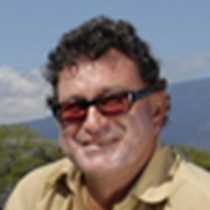Bartolomé and Santiago Islands
There was an early morning wake-up call, not only for photographers, but for all who wanted to walk to the summit of Bartolomé Island; a highlight not only for us, but in general, as this small young formation is also open for daily trips. Distinct from the rest of the group, this young formation is considered a geologist’s paradise, Bartolomé has different geological features at a very close range, Believed to be around 250,000 years old, the island has a collection of lava tubes in a variety of sizes; the closeness of the spatter cones let us talk about how calderas of volcanoes form. Pinnacle Rock and the golden beach where we had our snorkel in the morning are among the prettiest landscapes of the Galápagos.
Just a few very drought-resistant plants and lava lizards have been able to make it here; pioneer plants and animals have adapted to live almost without water… if it wasn’t for the rain they would not be able to make it here. Thanks to the conditions today and the very strong rains we have being having lately we could see that they were happily jumping around the rocks and catching flies…
We visited Puerto Egas in the afternoon—located on the northwestern coast of Santiago Island, the black beach and the volcanic tuff formations are covered in green vegetation; the contrast of colors between the formations and the black lava flows made a perfect setting for our final walk in the Galápagos Islands. Sea lions nursing, marine iguanas feeding on the rocks, herons hunting, not disturbed even by our presence here, made us realize that isolation is the best thing that can happen to this fragile and pristine ecosystem.




